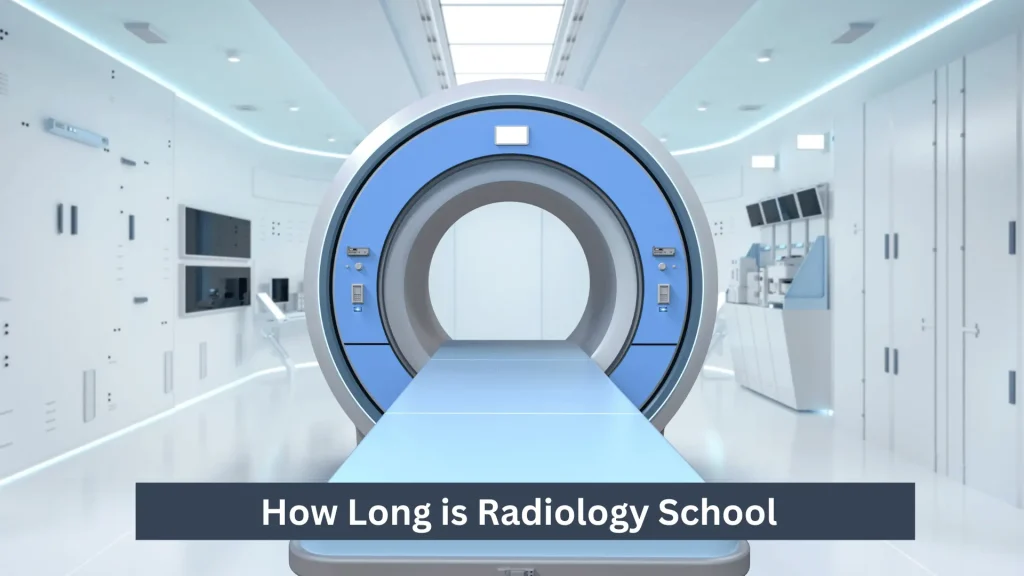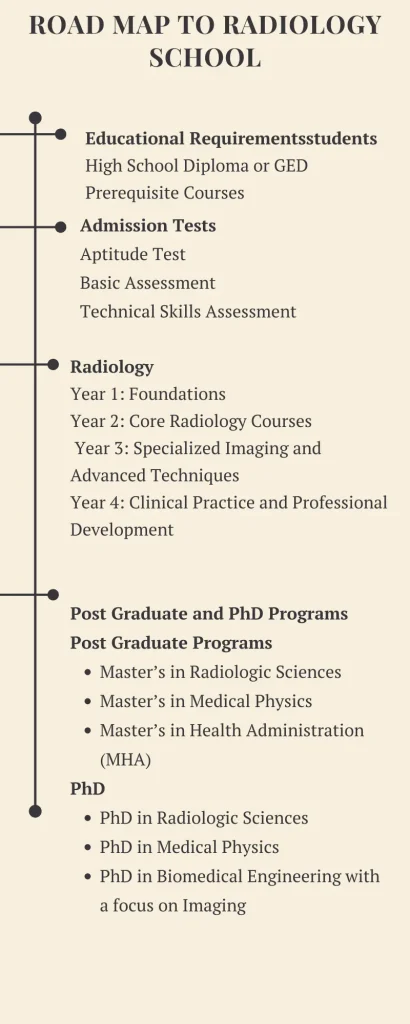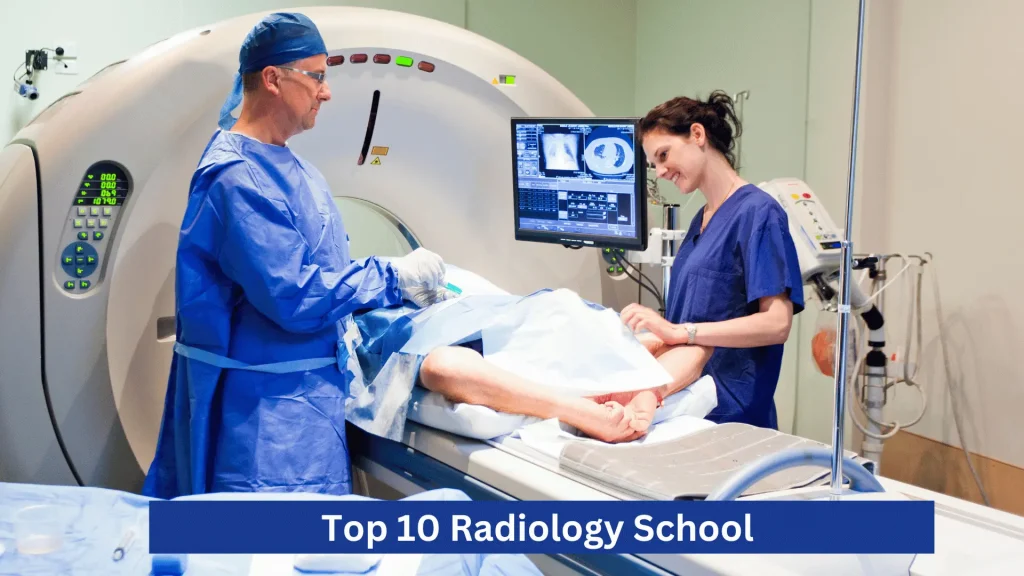Radiology school typically takes about two to four years to complete, depending on the specific program and degree sought. For those wondering “How Long is Radiology School” it’s important to consider the level of certification or degree pursued, with associate degrees often being shorter than bachelor’s degrees.
What is Radiology School
Radiology school is an educational program designed to train students in the field of medical imaging. These programs cover the use of various imaging technologies such as X-rays, MRI, and CT scans to diagnose and treat medical conditions. Students learn both the technical skills to operate imaging equipment and the clinical knowledge to understand the images produced.

Radiology schools offer a combination of classroom instruction and hands-on clinical experience. This training prepares graduates for careers as radiologic technologists, who play a crucial role in the healthcare industry by assisting physicians in diagnosing and monitoring patients’ health conditions. Programs vary in length and can lead to certificates, associate degrees, or bachelor’s degrees, depending on the depth and breadth of training provided.
How Long is Radiology School
Year 1: Foundations
In the first year, students typically focus on foundational courses in anatomy, physiology, and medical terminology. This year also includes introductory classes in radiologic technology, where students learn the basics of radiographic imaging and safety protocols. Additionally, general education courses such as math, English, and science are part of the curriculum.
Year 2: Core Radiology Courses
The second year delves deeper into radiology-specific subjects. Students study advanced imaging techniques, radiation physics, and patient care practices. Clinical rotations begin, allowing students to gain hands-on experience in real healthcare settings under the supervision of experienced radiologic technologists.
Year 3: Specialized Imaging and Advanced Techniques
In the third year, students focus on specialized imaging modalities such as computed tomography (CT), magnetic resonance imaging (MRI), and ultrasound. Courses in radiobiology and radiation protection are also covered. Clinical education continues, with students spending more time in hospitals and clinics to refine their skills and knowledge.
Year 4: Clinical Practice and Professional Development
The final year is heavily oriented toward clinical practice. Students complete extensive clinical rotations, working closely with professionals in various radiology departments. They also take courses in healthcare ethics, management, and advanced patient care. By the end of the fourth year, students are prepared to sit for certification exams and enter the workforce as competent radiologic technologists.

How to Enter Radiology School
Educational Requirements
High School Diploma or GED:
Completion of high school or equivalent is required.
Strong foundation in sciences such as biology, chemistry, and physics.
Prerequisite Courses:
Some programs may require prerequisite college-level courses in anatomy, physiology, and medical terminology.
Mathematics and English proficiency are also important.
Entry Tests
Standardized Tests:
SAT or ACT scores may be required for admission to undergraduate programs.
Some programs might require specific health-related standardized tests.
Assessment Exams:
Programs may have their own entrance exams to assess applicants’ knowledge in relevant subjects.
Application Process
Research and Selection:
Identify accredited radiology programs that meet your career goals.
Review specific admission requirements and deadlines for each program.
Application Submission:
Complete and submit application forms through the school’s website or a common application platform.
Provide official transcripts from high school and any college courses completed.
Submit standardized test scores (SAT, ACT) if required.
Personal Statement:
Write a personal statement or essay explaining your interest in radiology and career aspirations.
Letters of Recommendation:
Obtain letters of recommendation from teachers, counselors, or professionals in the healthcare field.
Interview:
Some programs may require an interview as part of the selection process.
Financial Aids
Scholarships:
Available from schools, professional organizations, and private entities.
Merit-based or need-based scholarships can help cover tuition costs.
Grants:
Federal and state grants like the Pell Grant provide need-based financial assistance.
Apply through the Free Application for Federal Student Aid (FAFSA).
Loans:
Federal student loans with low interest rates and flexible repayment options.
Private loans from banks or financial institutions.
Work-Study Programs:
On-campus employment opportunities that allow students to earn money while studying.
Employer Sponsorship:
Some healthcare employers offer tuition assistance or reimbursement programs for employees pursuing radiology education.
Post Graduate and PhD Programs for Radiology School
Post Graduate Programs
1. Master’s in Radiologic Sciences
Duration: Typically 2 years
Curriculum: Advanced imaging techniques, healthcare administration, radiologic education, research methods.
Career Opportunities: Radiology managers, advanced practice radiologic technologists, educators in radiologic technology programs.
2. Master’s in Medical Physics
Duration: Typically 2 years
Curriculum: Radiation physics, dosimetry, medical imaging, radiobiology.
Career Opportunities: Medical physicists in hospitals, research institutions, academic settings.
3. Master’s in Health Administration (MHA)
Duration: Typically 2 years
Curriculum: Healthcare management, policy, finance, ethics, leadership.
Career Opportunities: Hospital administrators, healthcare consultants, directors of radiology departments.
PhD Programs
1. PhD in Radiologic Sciences
Duration: 4-6 years
Curriculum: In-depth research in radiologic technology, advanced imaging techniques, radiologic science education, healthcare policy.
Career Opportunities: University faculty, principal investigators in research projects, high-level administrative roles in healthcare.
2. PhD in Medical Physics
Duration: 4-6 years
Curriculum: Advanced radiation physics, imaging science, computational methods, radiation therapy.
Career Opportunities: Academic researchers, clinical medical physicists, developers of imaging technology, consultants.
3. PhD in Biomedical Engineering with a focus on Imaging
Duration: 4-6 years
Curriculum: Biomedical imaging, signal processing, imaging system development, computational modeling.
Career Opportunities: Academic researchers, developers of new imaging technologies, roles in biomedical engineering firms.
Top 10 Radiology Schools
Choosing the right radiology school is crucial for a successful career in medical imaging and radiologic technology. Here are ten renowned radiology schools in the United States, known for their comprehensive programs, advanced facilities, and strong industry connections:

1. Johns Hopkins University
- Location: Baltimore, Maryland
- Program: Bachelor’s, Master’s, and Doctoral degrees in Radiologic Technology and Medical Imaging
- Highlights: Cutting-edge research facilities, renowned faculty, and extensive clinical training opportunities.
2. University of California, San Francisco (UCSF)
- Location: San Francisco, California
- Program: Bachelor’s and Master’s degrees in Radiologic Technology
- Highlights: Top-notch clinical training, state-of-the-art facilities, and strong emphasis on research.
3. Mayo Clinic College of Medicine and Science
- Location: Rochester, Minnesota
- Program: Bachelor’s and Master’s degrees in Radiologic Technology
- Highlights: World-class medical facilities, extensive hands-on training, and high job placement rates.
4. University of Pennsylvania
- Location: Philadelphia, Pennsylvania
- Program: Bachelor’s, Master’s, and Doctoral degrees in Radiologic Technology and Medical Imaging
- Highlights: Prestigious program with a strong focus on research, clinical practice, and interdisciplinary education.
5. University of Washington
- Location: Seattle, Washington
- Program: Bachelor’s and Master’s degrees in Radiologic Technology
- Highlights: Comprehensive curriculum, cutting-edge technology, and strong clinical partnerships.
6. Massachusetts General Hospital Institute of Health Professions
- Location: Boston, Massachusetts
- Program: Bachelor’s and Master’s degrees in Radiologic Technology
- Highlights: Affiliation with one of the top hospitals in the country, extensive clinical experience, and a strong focus on patient care.
7. Duke University
- Location: Durham, North Carolina
- Program: Bachelor’s, Master’s, and Doctoral degrees in Radiologic Technology and Medical Imaging
- Highlights: Renowned faculty, advanced research opportunities, and comprehensive clinical training.
8. University of California, Los Angeles (UCLA)
- Location: Los Angeles, California
- Program: Bachelor’s and Master’s degrees in Radiologic Technology
- Highlights: State-of-the-art imaging facilities, extensive clinical rotations, and a strong emphasis on research and innovation.
9. Emory University
- Location: Atlanta, Georgia
- Program: Bachelor’s, Master’s, and Doctoral degrees in Radiologic Technology and Medical Imaging
- Highlights: Comprehensive curriculum, top-tier clinical training, and a focus on cutting-edge imaging techniques.
10. Ohio State University
- Location: Columbus, Ohio
- Program: Bachelor’s and Master’s degrees in Radiologic Technology
- Highlights: Advanced imaging facilities, extensive hands-on training, and strong industry connections.
Factors Affecting the Length of Radiology School
1. Type of Degree:
Associate Degree in Radiologic Technology: Typically takes about 2 years to complete.
Bachelor’s Degree in Radiologic Technology: Generally takes 4 years to complete.
2. Program Structure:
Full-time Programs: Usually have a set duration, such as 2 or 4 years, depending on the degree.
Part-time Programs: May extend the duration due to a reduced course load per semester.
3. Clinical Training Requirements:
The amount of required clinical hours can affect the length of the program.
Programs with extensive hands-on training may take longer to complete.
4. Specializations:
Specializing in advanced imaging techniques such as MRI or CT may add extra time to the program.
Some specializations require additional coursework and clinical rotations.
5. Prerequisites and Remedial Courses:
Students needing to complete prerequisite courses before starting the radiology program may extend the overall duration.
Remedial courses for those needing extra preparation in subjects like math or science can also lengthen the program.
6. Academic Performance:
Students who struggle with the coursework or fail to meet academic standards may need additional time to complete the program.
Retaking failed courses can delay graduation.
7. Institutional Policies:
Some schools have specific policies that can affect program length, such as required internships or residency programs.
Transfer credits from other institutions can also impact the duration if not all credits are accepted.
8. Work and Personal Commitments:
Students balancing work, family, or other personal commitments may opt for a slower pace, extending the time needed to complete the program.
Flexible or part-time program options can accommodate these students but may lengthen the overall duration.
Final Verdict
Radiology school programs offer diverse paths to becoming a radiologic technologist, with varying lengths depending on degree type, specialization, and individual circumstances. Careful planning and understanding of requirements can help aspiring students navigate their educational journey effectively.
FAQs
1. How long does it take to complete radiology school?
Radiology school programs typically take 2-4 years, depending on the degree pursued (associate or bachelor’s).
2. What are the prerequisites for radiology school?
Prerequisites often include high school diploma or GED, and courses in anatomy, physiology, and medical terminology.
3. Are there specializations within radiology school?
Yes, specializations such as MRI, CT, and ultrasound are available and may require additional coursework and clinical training.
4. What types of financial aid are available for radiology students?
Financial aid options include scholarships, grants, federal and private loans, work-study programs, and employer sponsorships.
5. What career opportunities are available after completing radiology school?
Graduates can pursue careers as radiologic technologists, MRI technologists, CT technologists, or advance to roles in healthcare administration and education.
